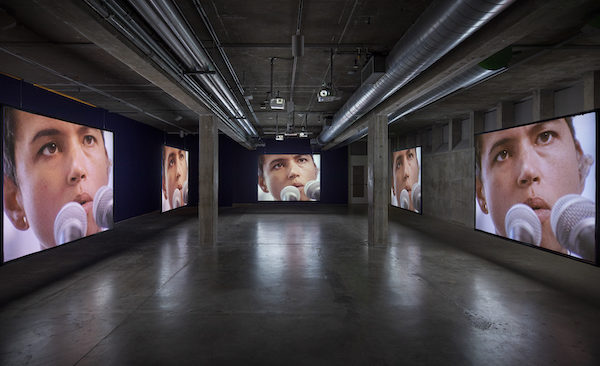
Mending Trauma through Art
Mariah Garnett brings her first solo US show to CAMH.

Mariah Garnett is an artist whose work is grounded in the magic of film and music. Her art explores our sense of space as well as place, and works respond to the world her and her place in it.
Garnett, 42 grew up. in the Hudson Valley of upstate New York. She holds an MFA from the California Institute of the Arts (CalArts) in Santa Clarita, and a BA from Brown University in Providence, Rhode Island. She is also a 2019 Guggenheim Fellow in Film and Video.
Her work has been shown all across the world, from the United Kingdom to Lon Angeles, with recent solo exhibitions that include a 10-year survey at the Los Angeles Municipal Art Gallery, the Metropolitan Arts Centre in Belfast, UK (Tate Network), ltd los angeles, and Louis B. James in New York City.
Garnett has received a number of honors and awards, and in 2021, her film collaboration with Dynasty Handbag, Weirdo Night, was featured at the Sundance Film Festival. She is currently teaching at the University of California, Los Angeles (UCLA).
This month at the Contemporary Arts Museum Houston (CAMH), Garnett is exhibiting her first US solo museum presentation entitled Mariah Garnett: Dreamd This Gateway. The multi-channel installation, commissioned by CAMH, asks, “Who speaks, and who is silenced? What histories or facets of a culture do we privilege and why? How do we acknowledge our history while also rewriting, repairing, and moving beyond our past trauma?”
To create this installation, Garnett worked in collaboration with experimental vocalist Holland Andres, Cairo-based documentary playwright Raphael Khouri, and professional opera singers Christopher Paul Craig and Breanna Sinclaire to create a series of operatic videos. The presentation is inspired by archival material related to opera composer Ruth Lynda Deyo (1884-1960), who is Garnett’s great-great-aunt.
“I’ve always known about her archives and diaries from 1917 to the 1940s,” Garnett explains. “There has just been something resonating recently – more about ‘Why now?’ I wasn’t really interested in them, and then there’s this reckoning with cultural appropriation, the rise of self-help culture, mysticism, and spirituality. She wrote this opera between world wars, and it must have felt apocalyptic. Why am I the one to make this? She is my link to these broader conversations.”

Growing up, Garnett wanted to be either a Shakespearean actor, an oceanographer, or an inventor. What she became is an artist, and more specifically, a filmmaker.
“I’m a filmmaker at heart. I’m not really good with material or media. For a long time, I’ve been questioning: Am I a filmmaker? Am I an artist? I really like to work with installations and have a viewer have an experience with a work in a room.”
Her Houston exhibit demonstrates her passion for both disciplines. “I fall in between the experimental documentary film world and the art world. The most exciting conversations I’ve had about my work have been in the modern-art world. I went where the warmth was,” she says. “I’m a moving-image artist.”
Garnett can’t recall a specific moment when she knew that she was an artist. “I make that decision every day. It’s a calling, [and] some people are really suited to it. But I don’t think it’s a calling in the sense that it is more important than other things that people do.”
Her partner, Jibz Cameron, is an artist as well. “I think she’s a genius. We make work together, sometimes,” Garnett says.
When asked how she defines the word art, she readily admits defeat. “I gave up trying to do that a long time ago. But art helps us access a part of our brain that is expansive. It enables us to experience different realities – aesthetically, temporally, emotionally, ideologically – from wherever we are standing, and it’s something all human beings can experience. It’s also a means of communicating with other people – which can sometimes span eons.”
She wishes more people could understand that being an artist is a job requiring hard work.
“I feel like, in this country especially, people see artists as useless, overgrown children who are so privileged they don’t have to work. I like my job most of the time, which makes me feel lucky.”
See Mariah Garnett: Dreamed This Gateway at the Contemporary Arts Museum Houston, 5216 Montrose Boulevard. Through August 28. For information, visit camh.org/event/mariah-garnett.










